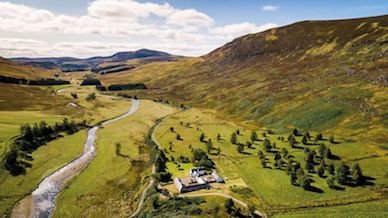A new report published by the Scottish Land Commission (SLC) shows the value of farmland in Scotland rose substantially between 2020 and 2022 — surging by 58% in the north east and 42% in the south west of the country.
The new research reveals a huge rise in the demand for Scottish farmland, with Aberdeenshire and Dumfriesshire emerging as prime locations.
Meanwhile, Argyll, central Scotland and south west Scotland are at the forefront of the demand for forestry land, the report shows.
The Rural Land Market Report reveals a widespread appreciation in land values throughout Scotland, crediting this growth to sustained demand, even as the overall volume of land entering the market remained relatively stable.
The report also identifies that most sales were of moderately sized farms or forests, with over 93% of transactions taking place in Scotland for areas of land less than 500 hectares.
Scottish Land Commission CEO Hamish Trench said: “This report provides a vital window into the nature and scale of transactions occurring within Scotland’s rural land market over the past three years.
“The findings reinforce the conclusions of our earlier research, highlighting the range of influences affecting Scotland’s rural land market, and the significant regional and sectoral variations which clearly show increasing activity across the south of Scotland.
“While the volume of land coming to market has been relatively consistent over the past three years, the vast majority of sales are moderate-sized farms and forests, with very large land acquisitions much being rarer.”
The findings draw on data from the Registers of Scotland and the wider industry to evaluate the land market and property values across the country, focusing on farms, forests and estates.
A total of 740 rural land sales took place over the three-year study period, of which 24 were for land over 1,000 ha in size, and a further 27 for areas of between 500-1,000 ha.
Farmland made up nearly 60% of total land sales. Eastern Scotland saw the highest concentration of deals, accounting for almost a third of national transactions while also having the top average prices per hectare at £17,535.
Forestry land had a more mixed experience with prices peaking in 2021 before falling back again in 2022 – a move attributed to inflation and grant incentives no longer covering rising land costs.
The report highlights challenges around what is considered an “Estate” within the data, as a wide variety of transactions could fall into the category.
As a result, the report also notes a wide range in the sale prices of these “estates” — starting from as low as £60,000 and going up to £17.6 million over the three-year period.
Trench added: “Through these reports, our commitment is to paint a clearer and more transparent picture of the rural land market, providing valuable insights to guide decisions on legal, policy, and practical changes.
“While we’ve successfully compiled a robust dataset, the report also underscores the necessity for ongoing reforms in how we collect and share data about land in Scotland.
“Transitioning towards a cadastral map system that consolidates information on land value, ownership, and use – a widely embraced approach in Europe – holds significant advantages.
“In the meantime, we will continue to work on how to make more of the existing data available.”
